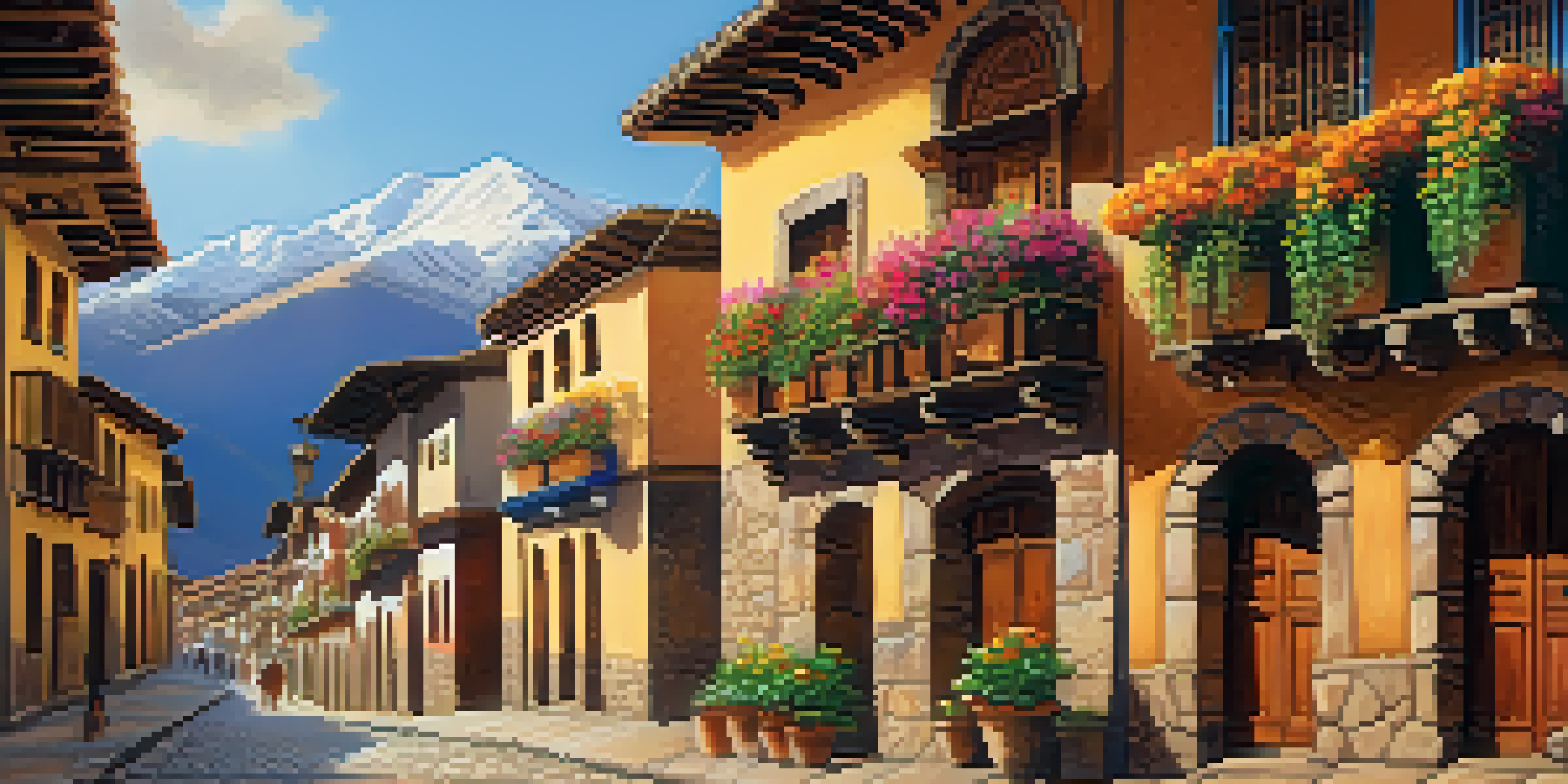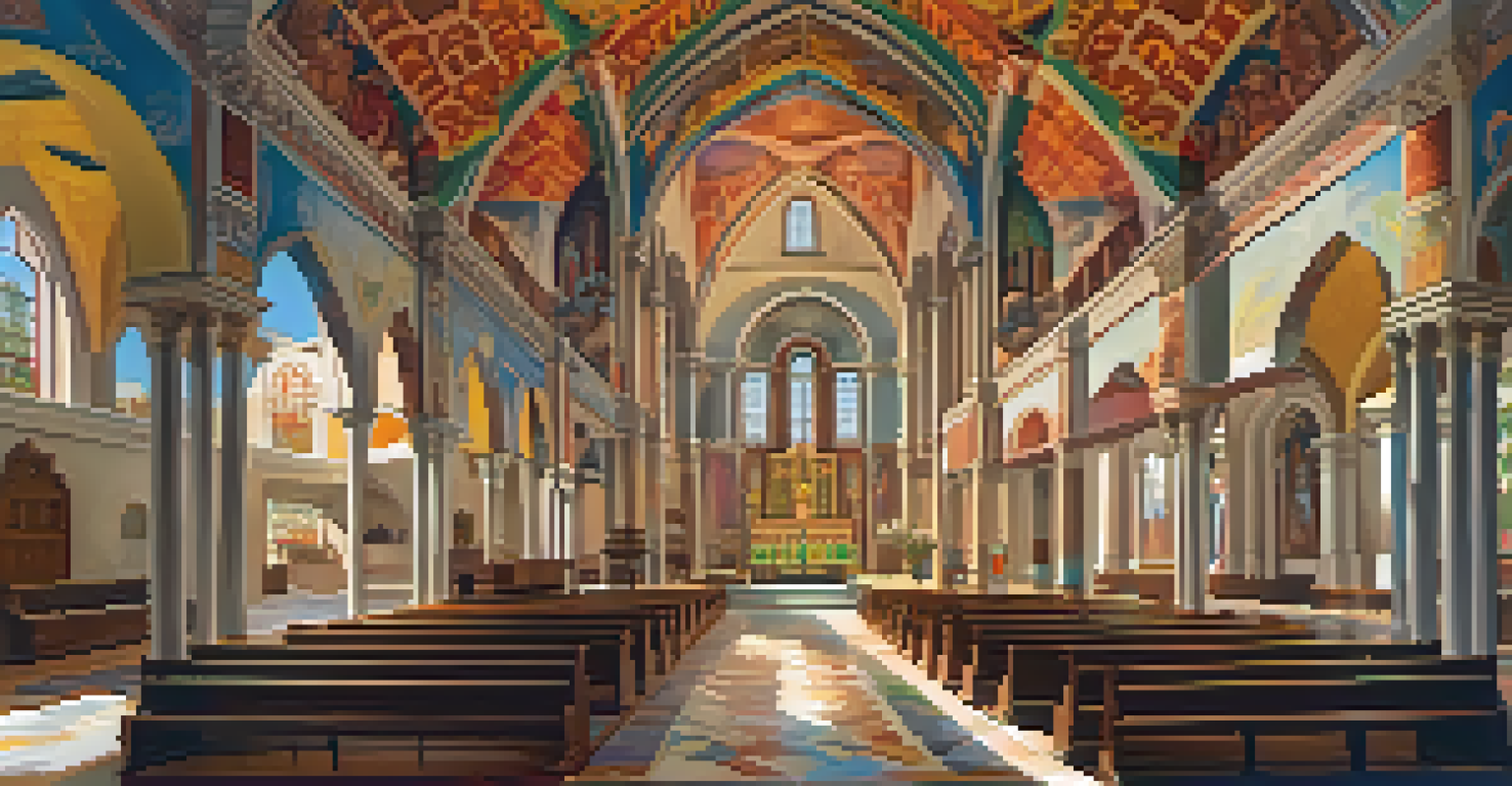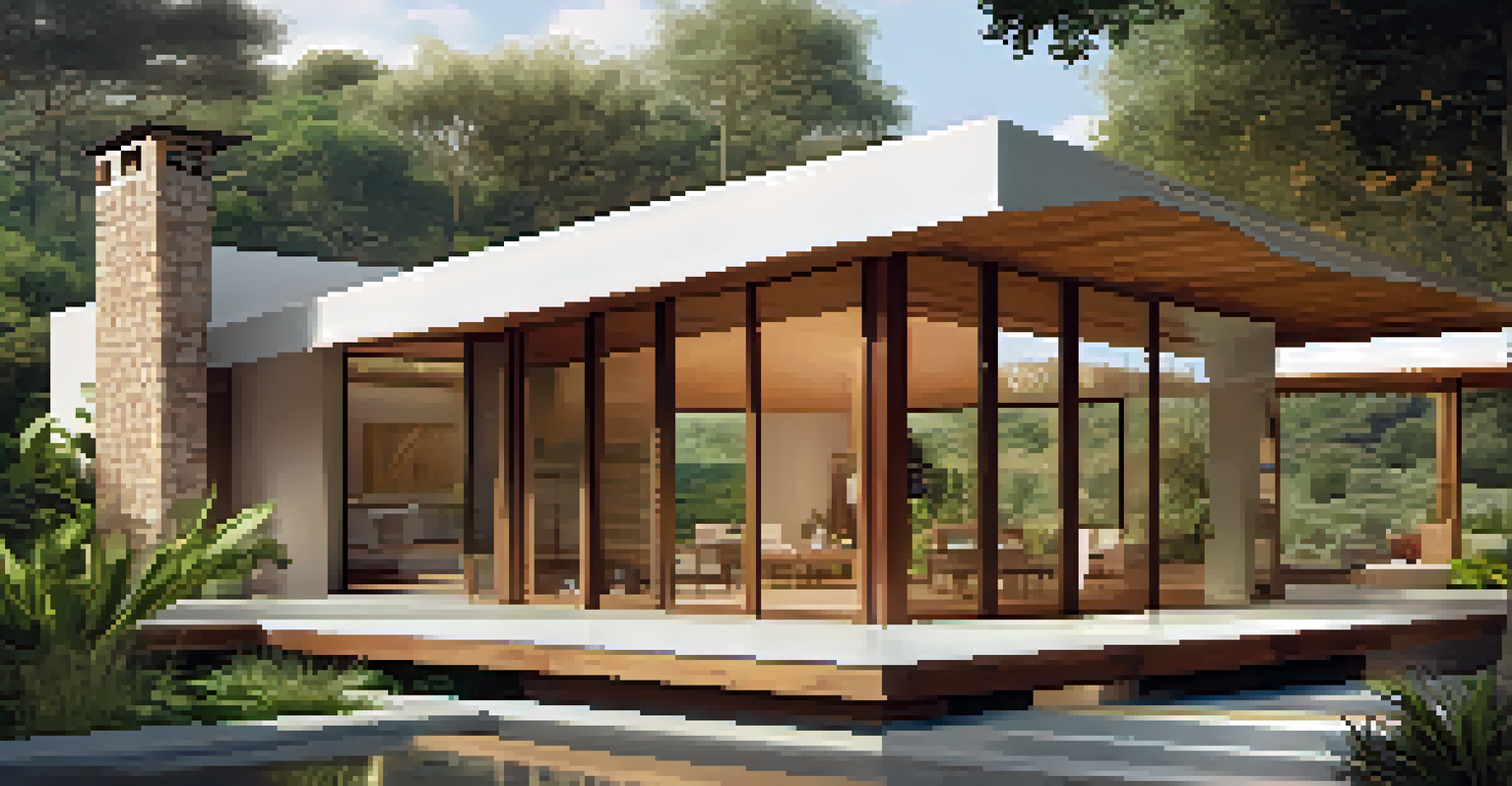Mestizo Architecture: Blending Cultures in Peruvian Design

Understanding Mestizo Architecture: A Cultural Fusion
Mestizo architecture is a unique blend of indigenous and Spanish colonial styles, showcasing the rich tapestry of Peru's cultural history. This architectural style emerged during the colonial period when Spanish settlers interacted with native populations, leading to a distinctive design ethos. The result is a fascinating dialogue between two worlds, where traditional Andean elements meet European influences.
Architecture is the learned game, correct and magnificent, of forms assembled in the light.
In essence, Mestizo architecture represents more than just a visual aesthetic; it embodies the stories, struggles, and resilience of the Peruvian people. Structures like churches, homes, and public buildings reflect this intricate relationship and serve as lasting symbols of cultural convergence. To appreciate Mestizo architecture is to understand the heart of Peru itself.
For example, in Cusco, you can see this fusion in the famous San Blas neighborhood, where colonial buildings sit alongside Incan stonework. This interplay of styles not only creates a unique visual identity but also tells the story of a nation forged through diversity and adaptation.
Key Characteristics of Mestizo Architecture
Mestizo architecture exhibits several defining characteristics that make it stand out. One notable aspect is the use of local materials such as adobe, stone, and wood, which are often combined in innovative ways. This not only reflects the environment but also showcases the craftsmanship of local artisans who have honed their skills over generations.

Another characteristic is the incorporation of decorative elements that draw from both indigenous and Spanish traditions. For instance, you might find intricate wooden balconies adorned with carvings and vibrant colors that reflect the rich cultural heritage of Peru. These design features not only serve aesthetic purposes but also illustrate the values and beliefs of the communities that built them.
Cultural Fusion in Architecture
Mestizo architecture blends indigenous and Spanish colonial styles, reflecting Peru's rich cultural history.
Additionally, Mestizo architecture often emphasizes harmony with the surrounding landscape, blending seamlessly with the natural environment. This connection to nature is vital, as it reflects the Andean worldview that sees humanity as part of a larger ecosystem, further enriching the architectural narrative.
Influence of Indigenous Cultures on Mestizo Design
The influence of indigenous cultures on Mestizo architecture is profound and can be seen in various design elements. Many structures incorporate traditional Andean motifs, such as geometric patterns and symbolic representations of natural elements. These designs are not merely decorative; they convey deep cultural meanings and histories that resonate with local communities.
Every building is a product of its time, reflecting the social, political, and cultural conditions in which it was created.
Moreover, indigenous construction techniques, such as the use of terracing and irrigation systems, are evident in many Mestizo buildings. These practices not only demonstrate a sophisticated understanding of the environment but also showcase the ingenuity of indigenous peoples in adapting to their surroundings. This blending of techniques results in structures that are both functional and aesthetically pleasing.
A great example of this influence can be seen in the use of the 'chullpa' style, which features cylindrical towers found in ancient Andean architecture. When integrated into colonial buildings, these forms create a striking juxtaposition that honors Peru's rich heritage while adapting to new influences.
Spanish Colonial Impact on Mestizo Architecture
The Spanish colonial period significantly shaped Mestizo architecture, introducing new styles and materials to the Andean landscape. Spanish settlers brought with them Baroque and Renaissance architectural elements, which were adapted to local contexts. This resulted in a unique fusion that characterizes many of Peru's historical buildings today.
For example, the use of arches, vaulted ceilings, and ornate facades became prevalent during this time. These features not only added grandeur to structures but also served practical purposes, providing stability in the region's seismic conditions. The combination of these architectural styles created a unique identity that speaks to the complex history of Peru.
Preservation of Heritage
Efforts to preserve Mestizo architecture are vital for maintaining Peru's cultural identity and educating future generations.
Additionally, the Spanish influence is evident in public spaces such as plazas and cathedrals, which often serve as focal points for community life. These spaces reflect the importance of social interaction and cultural exchange, further enriching the architectural landscape of Peru.
Modern Interpretations of Mestizo Architecture
In recent years, modern architects have begun to reinterpret Mestizo architecture, infusing it with contemporary design principles while honoring traditional elements. This movement aims to create spaces that resonate with both historical significance and modern functionality. By doing so, architects are not only preserving the past but also ensuring its relevance for future generations.
For instance, many new buildings incorporate sustainable practices that echo the wisdom of indigenous construction techniques. Elements such as natural ventilation, solar energy, and rainwater harvesting are being embraced, creating a dialogue between the old and the new. This approach not only respects the environment but also reflects a growing awareness of cultural heritage.
One notable example is the 'Casa Huayo' project, where architects used traditional materials and techniques to create a modern home that respects its surroundings. Such initiatives highlight how Mestizo architecture can evolve while maintaining its core values, creating a rich tapestry of design that is both innovative and rooted in tradition.
Mestizo Architecture and Cultural Identity
Mestizo architecture plays a vital role in shaping cultural identity in Peru, serving as a physical manifestation of the country's diverse heritage. The blend of indigenous and colonial influences reflects the complex history of the nation, where different cultures have coexisted and interacted over centuries. This architectural style is more than just buildings; it's a testament to the resilience and creativity of the Peruvian people.
As communities engage with their architectural heritage, they are reminded of their roots and the narratives that have shaped their identities. This connection fosters a sense of pride and belonging, reinforcing the importance of cultural preservation in a rapidly changing world. It’s a way for people to honor their past while looking forward to the future.
Modern Interpretations Emerge
Contemporary architects are reinterpreting Mestizo architecture, combining traditional elements with sustainable design practices.
Moreover, the celebration of Mestizo architecture in festivals and cultural events further emphasizes its significance. Through art, music, and storytelling, these occasions bring communities together, allowing them to share their unique perspectives and experiences, ultimately strengthening the cultural fabric of Peru.
Preservation Efforts for Mestizo Architecture
Preserving Mestizo architecture is crucial for maintaining Peru's cultural heritage, and various efforts are underway to ensure these historical structures are safeguarded. Government initiatives, non-profit organizations, and local communities are collaborating to identify and protect valuable architectural sites from deterioration and urban development. These efforts highlight the importance of cultural preservation in fostering a sense of identity.
One effective approach has been the establishment of heritage conservation programs, which aim to restore and maintain significant buildings using traditional techniques and materials. This not only preserves the physical structure but also helps to educate future generations about the importance of their architectural heritage. Workshops and training sessions for local artisans are essential in passing down these skills.

Additionally, raising awareness about the value of Mestizo architecture is vital in garnering public support for preservation efforts. By promoting the stories and significance behind these structures, communities can foster a greater appreciation for their cultural heritage, ensuring that future generations continue to cherish and protect this unique architectural legacy.